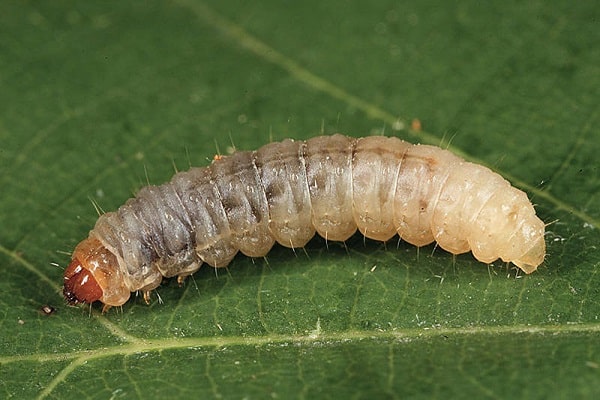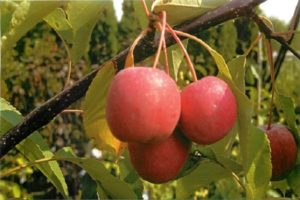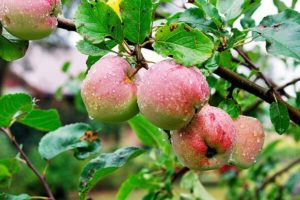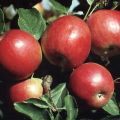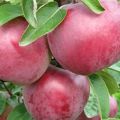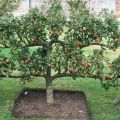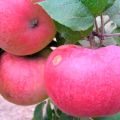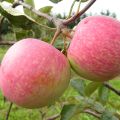Description of the early Aloe apple variety and yield characteristics
If a gardener plants an Early Aloe apple tree in his country house, then he will not be disappointed, because the fruits of this variety have an excellent taste and attractive appearance. This tree is unpretentious, so it will not be difficult to grow it. Apples of this variety are suitable for consumption both fresh and processed into jam, as well as compotes are prepared from dried fruits.
The history of the appearance of the variety
The Aloe Early apple tree was bred back in 1966 by crossing such varieties as Melba and Papirovka by breeders from the All-Russian Research Institute, headed by scientist E.N.Sedov. This plant inherited from the parents received improved qualities from the characteristics of each variety. He has increased frost resistance and increased productivity.
This variety is intended for the regions of the central zone of the Russian Federation, but it is successfully grown in other parts of the country, for example, in the northwest.
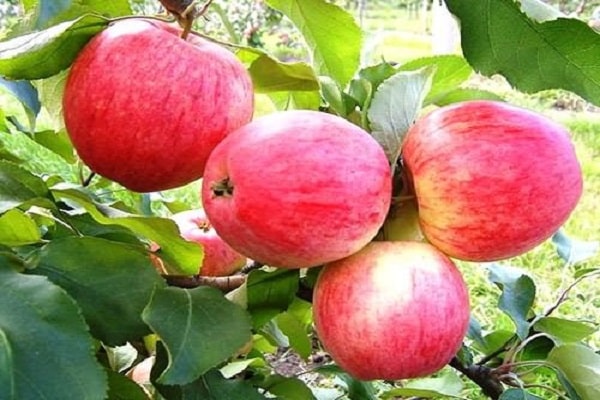
Description of the variety
Apple-tree Aloe Early belongs to the early summer varieties. The tree enters fruiting 3-4 years after planting in a permanent place. The winter hardiness of this plant is good. Self-infertile, so it must be planted next to other early summer varieties, such as Silver Hoof, Mantet, Lingonberry, Solntsedar, Altai Rumyanoye and others.
The description of this variety indicates that the apple tree blooms from May 15th. Fruit ripening is extended in time and begins from the beginning of August. The average yield is about 170 centners per hectare.
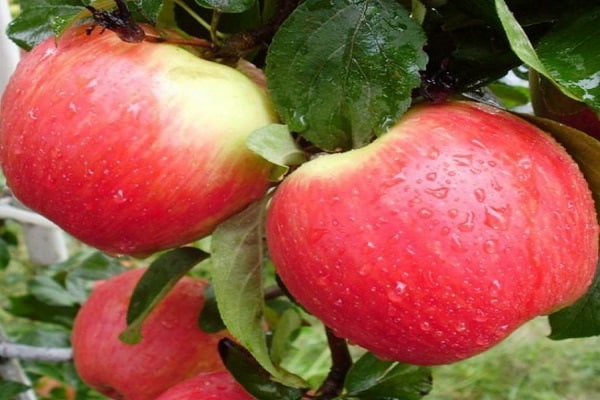
Appearance
The height of the tree is average, the plant grows up to 4-5 meters. The fruit has some variegation and a thin, shiny rind. The pulp in the cut is distinguished by a white, juicy pulp with a fine-grained structure. Fruit weight ranges from 85 to 120 grams. Gardeners rate the palatability at 4.5-4.7 points.
Useful qualities of fruits
Early Aloe apples have a sweet taste with a slight acidity and a pleasant aroma. The composition of this type of fruit is as follows:
- P-active substances - 288 mg per 100 g.
- Vitamin C - 14.7 mg per 100 g.
- Sugar - 9.3%.
- Titratable acids - 0.74%.
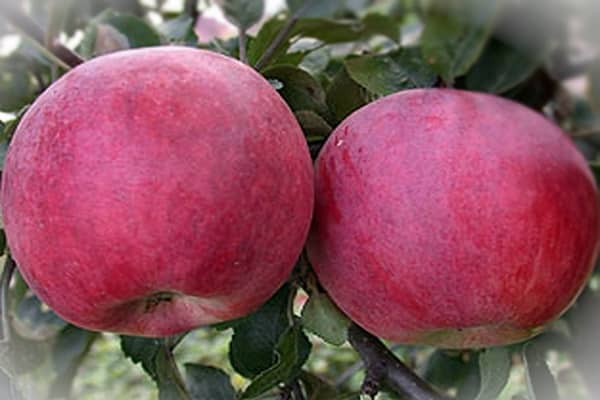
Escapes
It has a rich green hue of pointed foliage and red fruits. The plates have a concave shape, and pubescence on the underside. Inflorescences of a pale pink shade, flower petals close and are arranged vertically. The pistil is placed at the same height as the stamens.
The branches make up a round, dense crown. They are close to each other, and their ends are raised up. The color of the branches is dark gray.
Features of the variety
The apple-tree variety Aloe Early has increased winter hardiness and productivity. Its height reaches 4 meters. The tree is early-growing, bears fruit already in the 4th year. Buds are laid on short shoots with ring-shaped beads. They are called simple and complex ringlets.
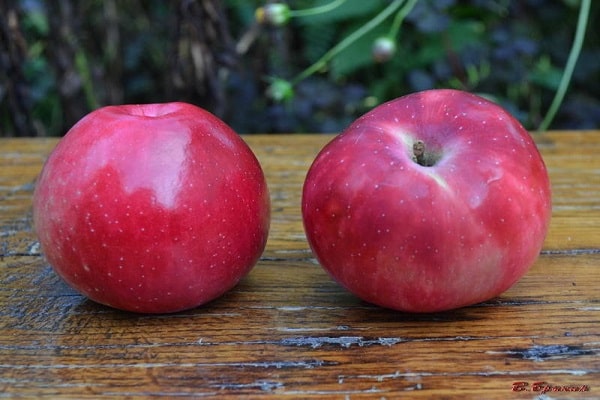
Advantages and disadvantages
The advantages of this apple tree variety include good resistance to frost, high yield, excellent appearance and taste of fruit, and its early maturity.
Lack of Early Scarlet in moderate scab resistance.
Harvesting and storage
Apple tree fruiting begins in August. Fruits are poured in more than one period - their ripening occurs stretched out, so gardeners make sure that they do not overripe on the branches of the tree. It is advisable to eat the fruits for a month, but if after this period they remain, then with proper storage they do not lose their quality.
Plucked fruits are put in a wooden container and stored in a cool place with optimal air humidity.
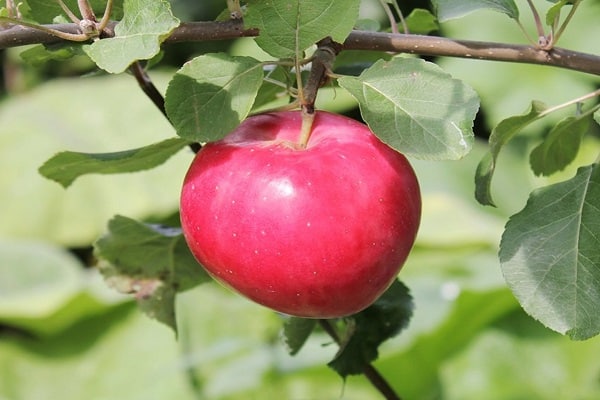
Disease and pest control
The Aloe Early apple tree, like most other fruit trees, can be affected by scab and tinder fungus, and among insects, the apple moth is the enemy. For the purpose of prevention, the following measures are taken:
- do systematic pruning;
- in a timely manner, phosphorus-potassium fertilizing (ash is possible) for better resistance of the tree;
- regularly collect carrion;
- the foliage fallen in the autumn is removed;
- the bark is stripped to living tissue before winter;
- before a period of calm, they dig up the soil;
- the tree trunk is whitewashed in time.
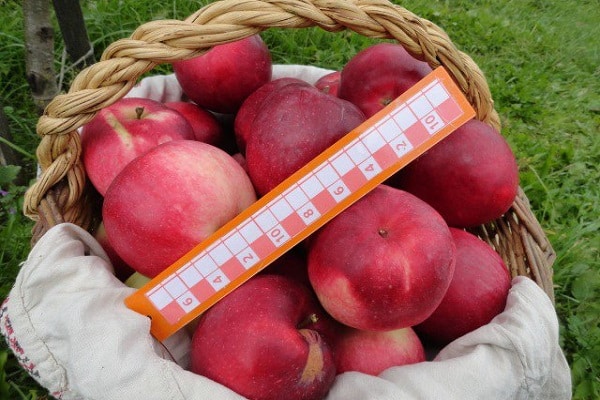
If the apple trees were affected by tinder fungus, then disinfection must be carried out. This is a fungal infection that has no effect on the fruits themselves, but is detrimental to plants. The tinder fungus parasitizes the apple tree, sucking out nutrients. For this reason, the tree is sick and stops bearing fruit.
The fungus settles on the bark of an apple tree, and at the initial stage it is easy to get rid of it: it is cut out with a knife or cut out with an ax. It is very important to remove the tinder fungus completely so that no relapse occurs. After the plants are treated with diluted copper sulfate. At the end of the procedure, a garden var is used to seal the wound.
Another serious condition is scab. The early Aloe apple tree has some resistance to it.
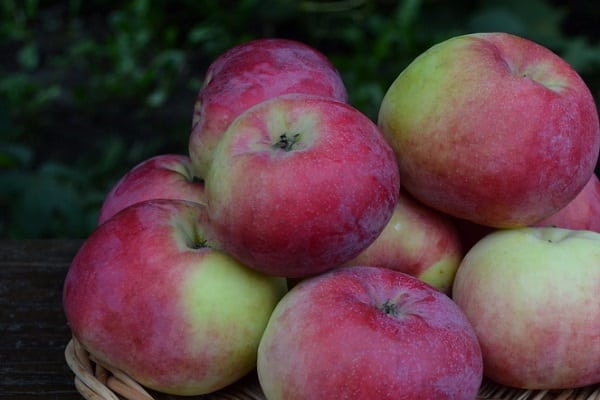
Scab infection occurs due to high air humidity. This usually happens during the rainy season. First of all, the leaves of the tree are affected, and then the fungus gets on the fruit. Visually, the disease appears in the form of brown spots.
Fruits that show signs of damage should neither be stored nor used for food.
Effective scabs - preparations containing copper:
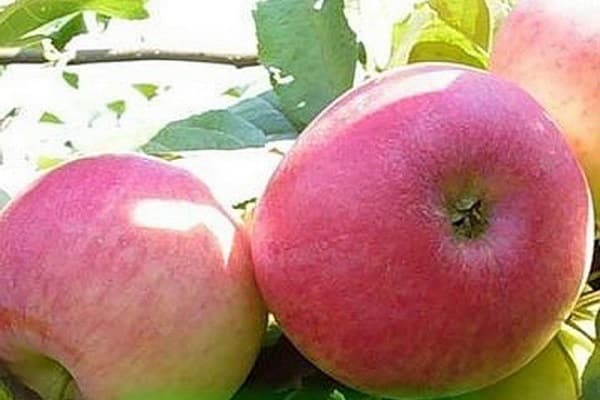
- bordeaux liquid;
- copper sulfate solution;
- diluted urea;
- copper oxychloride.
The third dangerous enemy of the early Aloe tree is the apple moth. It is a moth, its larvae and harm to the fruit. The apples affected by them cannot ripen and fall off. Thus, sometimes up to 90% of the total crop is lost.
If the preventive measures described above are not enough, and the tree is still affected by pests, then gardeners use insecticides.
The Aloe Early apple tree is deservedly popular among summer residents, because it is very prolific, unpretentious and frost-resistant, and its fruits are tasty and beautiful.
